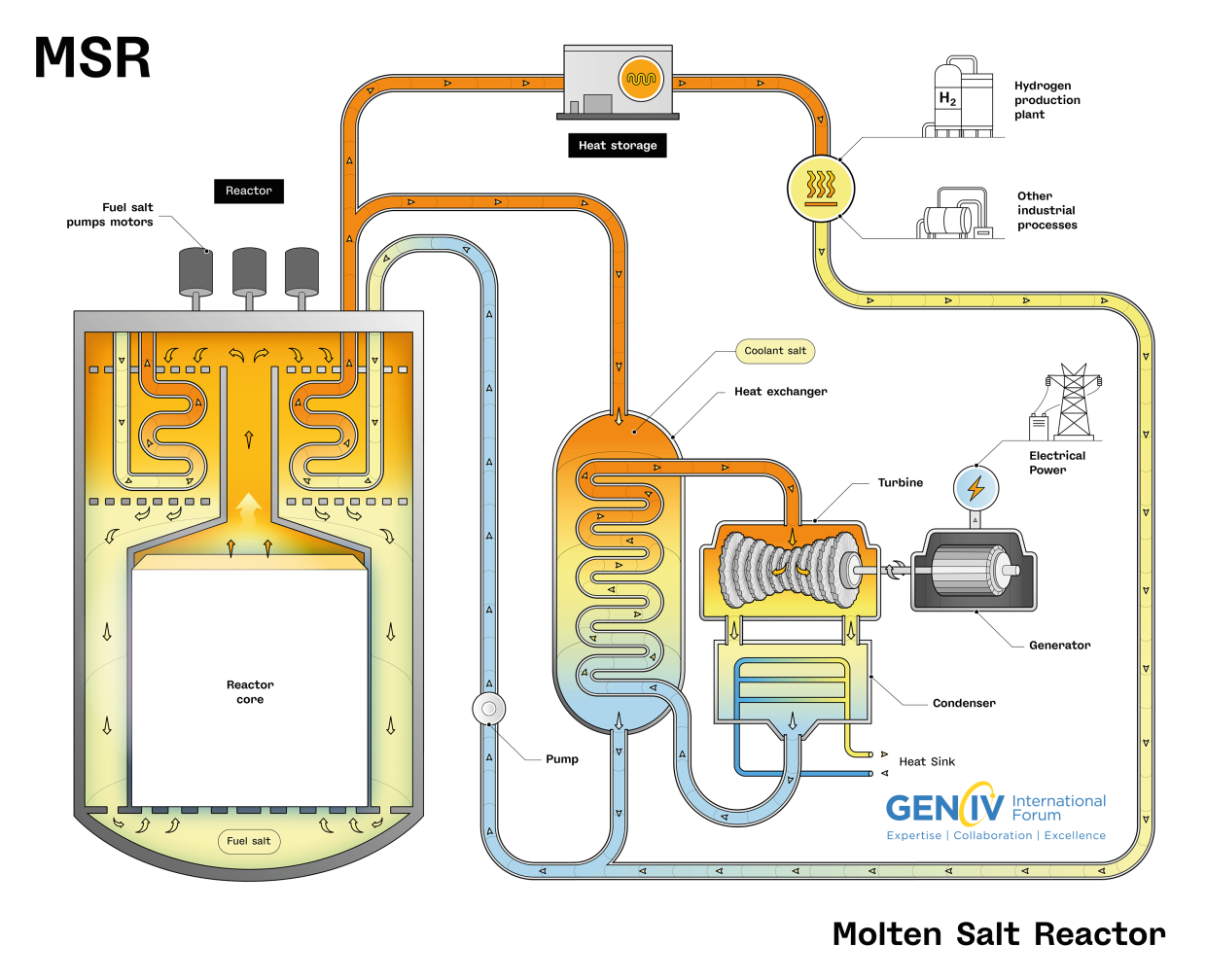Molten Salt Reactors
Why Molten Salt Reactors?
Molten Salt Reactors (MSRs) are an advanced concept of nuclear reactors that use molten salts as the fuel and/or coolant. In their liquid-fueled version, nuclear material is dissolved in hot liquid salt, creating a flexible and efficient way to generate clean energy.
MSRs have been researched since the early days of nuclear energy, but recent technological advancements and growing demand for low-carbon energy have renewed interest in their development. Today, many innovative MSR designs are being explored across Europe and worldwide, including small modular reactors and both thermal- and fast-spectrum concepts.
What Makes MSRs Unique?
Enhanced safety
Many MSR designs include passive safety features, meaning they can safely shut down or cool themselves without human intervention or active systems. Thanks to the physical properties of molten salt fuel—like strong negative reactivity coefficients—MSRs naturally respond to changes in temperature, helping prevent overheating. In addition, MSRs usually work at low or even ambient pressure, reducing the risk of high-pressure accidents or explosions.
Flexible and Sustainable Fuel Use
One of the standout advantages of MSRs is their flexible fuel cycle. They can use a range of materials, including uranium or plutonium, even from existing waste; Thorium, an abundant and underutilized element in Europe; And in some cases, recycled fuel through on-site processing. MSRs can operate in breeder mode (creating more fuel than they consume) or burner mode (reducing long-lived nuclear waste). This versatility helps support long-term sustainability and energy independence. In addition, MSRs achieve higher fuel burnup than conventional reactors, meaning they use more of their fuel and need refueling less often. This results in less radioactive waste and smaller volumes of spent fuel.
More Sustainable Energy
MSRs operate at much higher temperatures—often above 600°C—than conventional reactors. This allows them to produce electricity more efficiently and opens up new uses beyond power generation, such as hydrogen production, water desalination, and industrial process heat.
By combining cutting-edge safety features with the ability to minimize waste and use fuel more flexibly, Molten Salt Reactors could play a major role in Europe’s clean energy future being a strong complement to traditional reactors and to renewables energy. They support our goals of reducing carbon emissions, increasing energy independence, and leading the way in sustainable technology.

